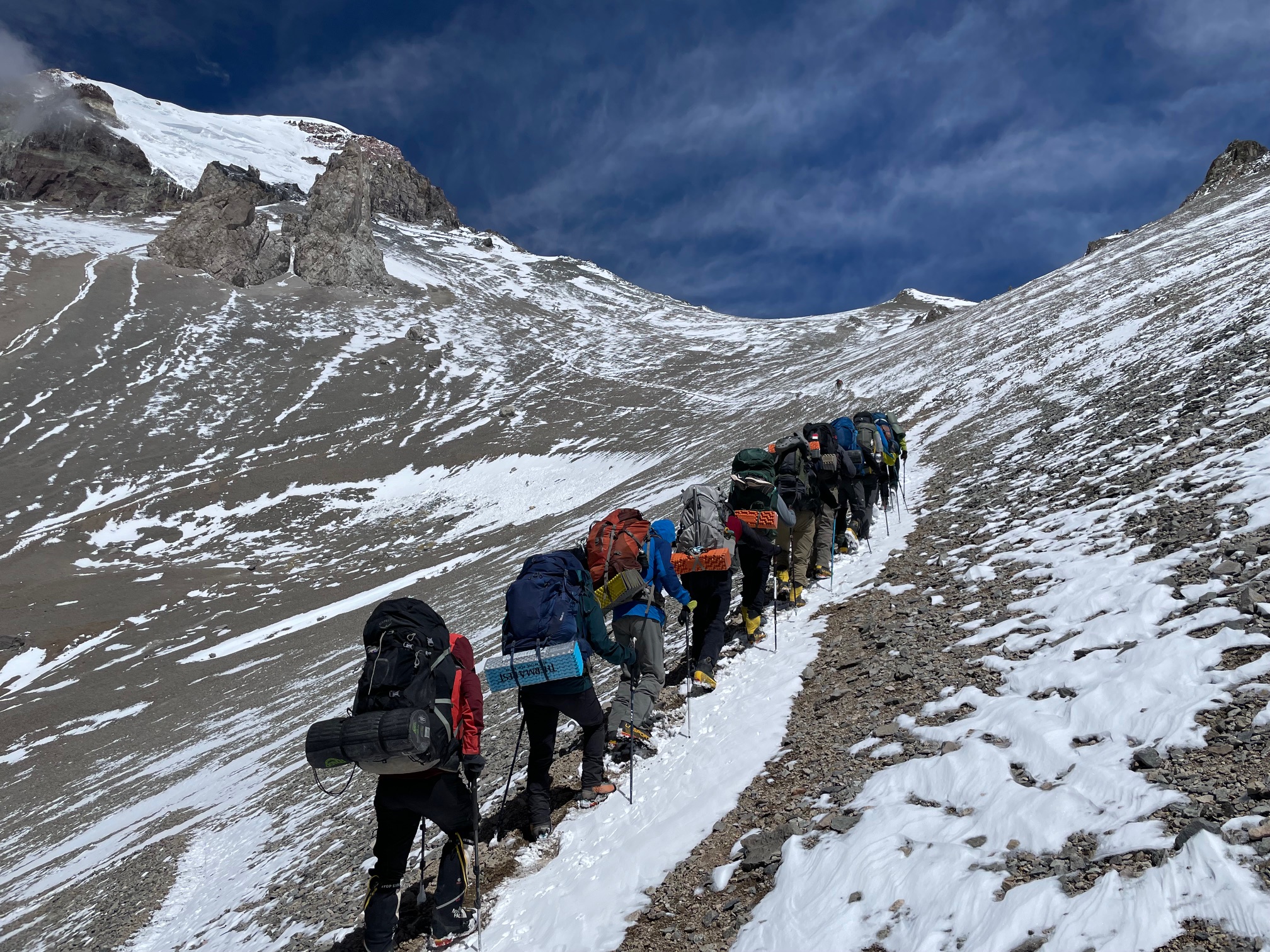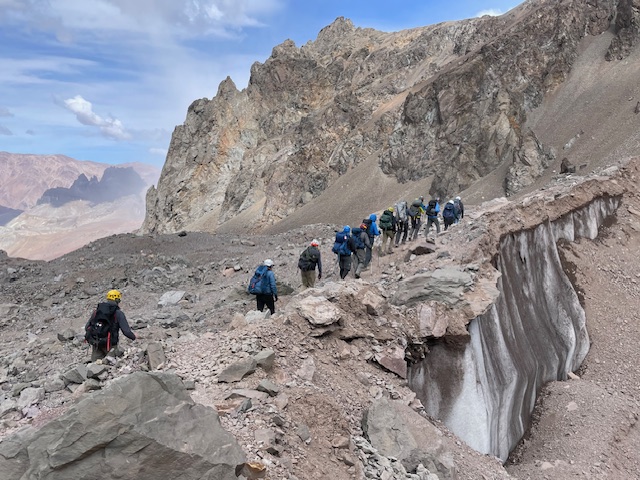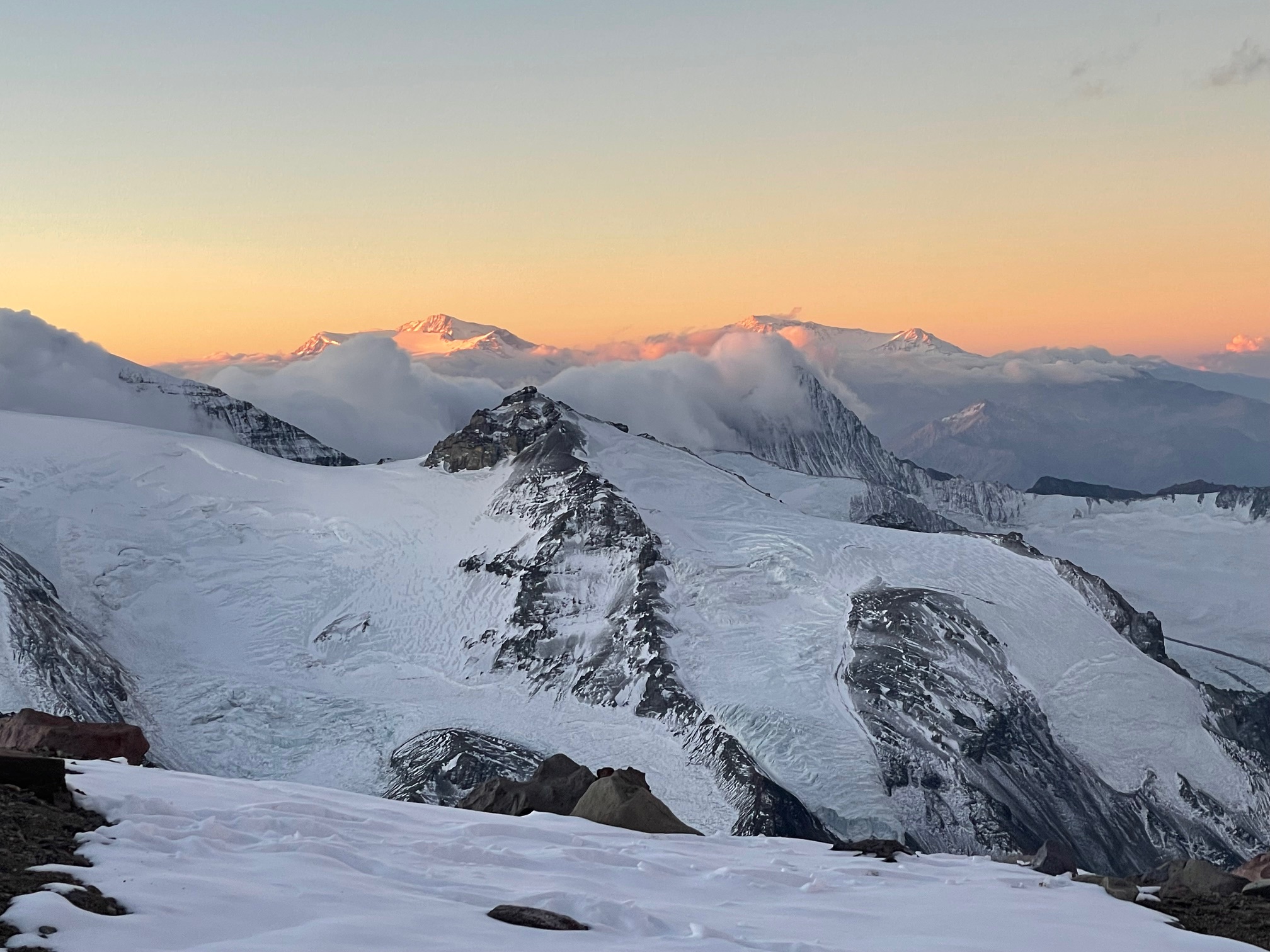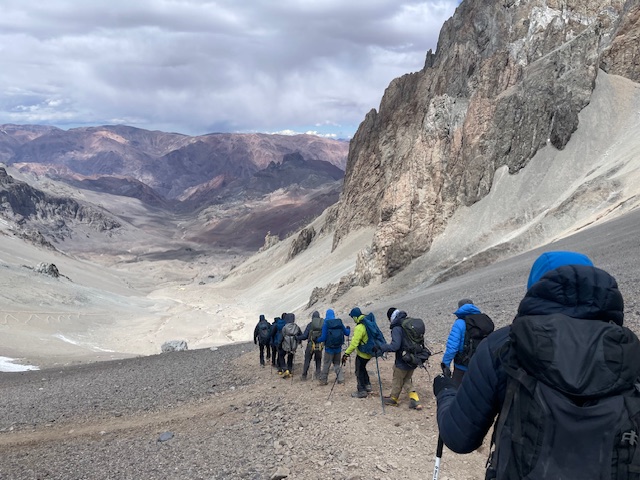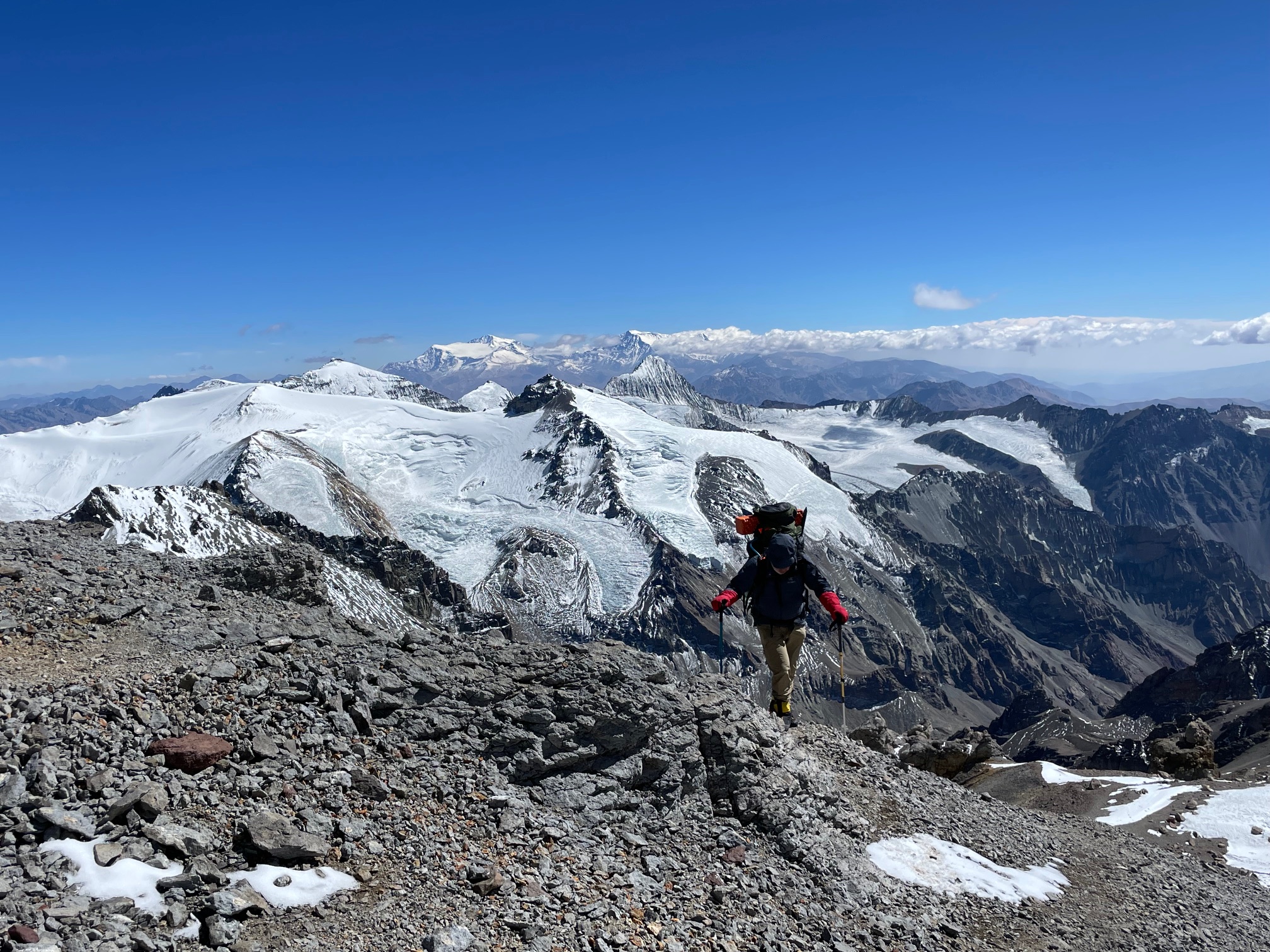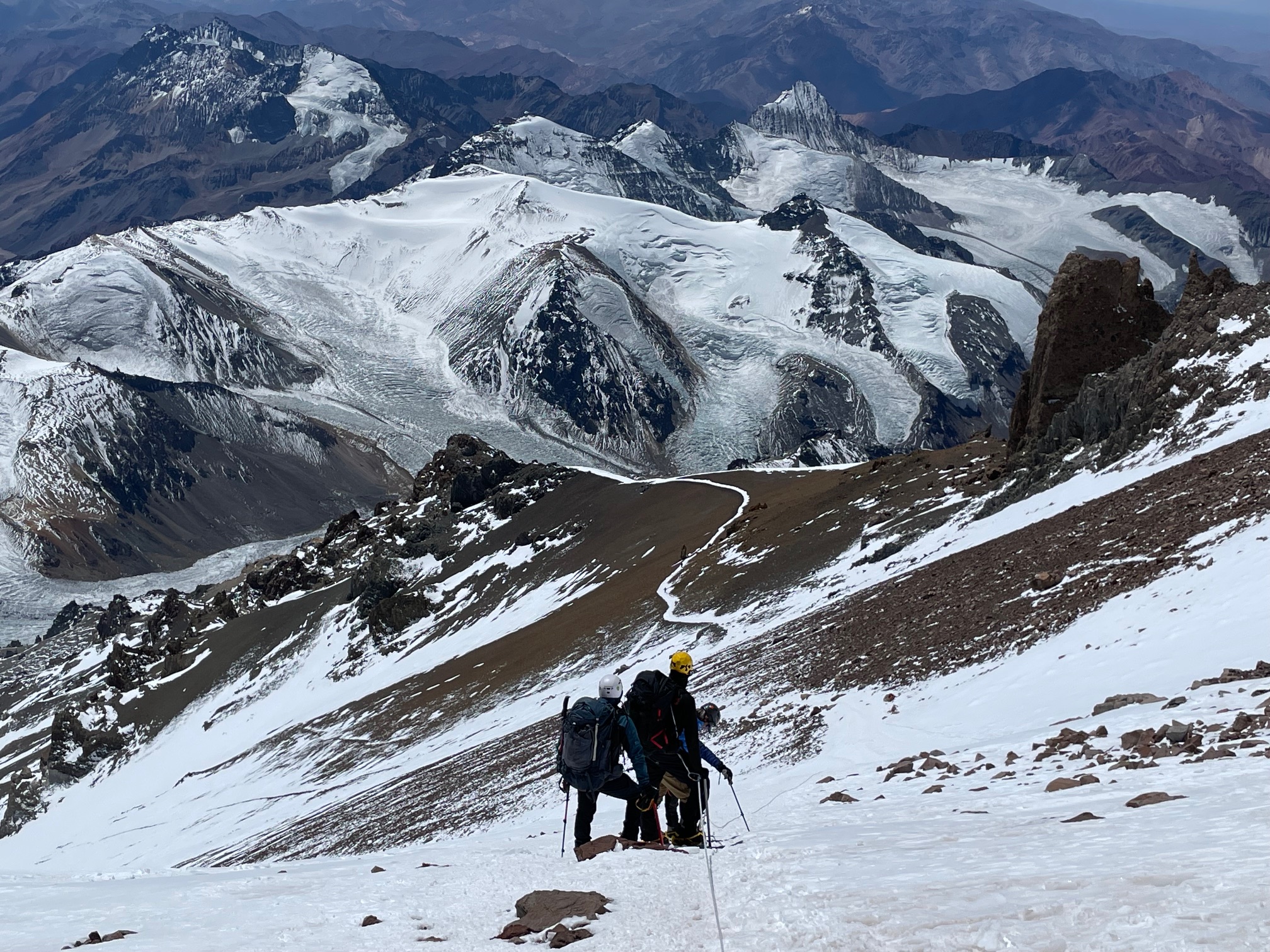Can a beginner climb Aconcagua? Firstly It’s important to note that while Aconcagua can be climbed by beginners with the right preparation and support, it is not to be taken lightly. Secondly, conditions on the mountain can change in a minute and you can encounter some of the harshest weather in the best weather months. Read some reviews and check out our upcoming trips.
There are Many Risks on Aconcagua
Firstly, climbers should be aware of the risks associated with high-altitude trekking and mountaineering and take appropriate precautions. Testing yourself at high altitude on numbers trips before Aconcagua is one of my highest recommendations.
From our perspective you need to have been on a few multi-day High Altitude treks before taking on Aconcagua. Read more from one of our clients experience building up to their Aconcagua expedition.
If you’re a beginner with the ambition to climb Aconcagua, consider the high and extreme altitude you will encounter on Aconcagua. Enrolling on one of our Kilimanjaro trips. Kilimanjaro is a great way to test yourself at High Altitude with a big summit day up and down before taking on Aconcagua.
Aconcagua is Steep
Consider the nature of the terrain and know it can change from year to year and month to month. You can encounter more technical and challenging terrain so doing a course in basic mountaineering will ensure you are more comfortable on snow, ice and rocker terrain in big mountaineering boots. We run these courses in Scotland and Colorado.
There is a risk of rock fall high on Aconcagua so awareness of your surrounds is vital while climbing. This is why you need a high level of support on a tried and tested itinerary. Our guided expeditions managed by experienced guides can provide the necessary support, guidance, and expertise for a safe and successful experience.
Additionally, investing time in the correct physical training will contribute to a more enjoyable and successful climb. Read more about our training advice.
” Aconcagua is a Beast of a Mountain” – Ian Taylor
Is Aconcagua a Difficult Climb?
Aconcagua is considered a challenging climb, primarily due to its high altitude and the associated risks. While it is not technically difficult in terms of requiring advanced mountaineering skills like rock or ice climbing, several factors make Aconcagua a demanding ascent.
While Aconcagua is often referred to as a “non-technical” climb, meaning it doesn’t require specialized technical skills, climbers should not underestimate the physical and mental demands of the ascent. Many climbers opt to join guided expeditions led by experienced guides to enhance their chances of success and safety.
Ultimately, while Aconcagua is achievable for climbers with the right preparation, it is essential to approach the climb with respect for its challenges and to prioritize safety throughout the journey.
Is Aconcagua harder than Kilimanjaro?
Comparing the difficulty of climbing Aconcagua and Kilimanjaro involves considering various factors. Both mountains present unique challenges, but there are key differences in terms of altitude, technical difficulty, and environmental conditions.
1). Altitude
Aconcagua: Aconcagua is significantly higher than Kilimanjaro, standing at 6,959m / 22,831 feet). The altitude curve bends sharply above 5,500m/ 18,000 feet. On Aconcagua you have to carry loads up to 6,000m/ 19,695 feet after many back to back days carrying weight at high Altitude before a steep and challenging summit day. The higher altitude introduces more severe altitude-related challenges, less sleep, less recovery and more stress on the body.
Kilimanjaro: Kilimanjaro, Africa’s highest peak, reaches 5,895m/ 19,341 feet. While still a high-altitude climb, it is lower than Aconcagua. On Kilimanjaro the terrain is more manageable, not as steep as Aconcagua. We only spend 8 days on Kilimanjaro, most nights are spend between 3,500m/ 11,500 feet and 4,000m/ 13,000 feet, before moving to 4,900m/16,000 feet at Kosovo Camp for a short period of time. Summit and return as quickly as possible below 4,000m/ 13,000 feet.
“There is a massive difference between going to high altitude and living at high altitude” – Ian Taylor
2). Technical Difficulty
Aconcagua: Aconcagua is often referred to as a “non-technical” climb, meaning it doesn’t involve advanced mountaineering skills like rock or ice climbing. However, it requires an excellent level of physical fitness, acclimatization, and the ability to navigate challenging terrain.
This year there were some accidents and deaths high on Aconcagua and conditions required fixed lines, roping up and ice axe. The conditions were challenging and potentially very dangerous. Coming in excellent physical conditioning, knowing some mountaineering techniques, being proficient in using crampons, ice axe is of real value on Aconcagua.
Kilimanjaro: Kilimanjaro is also considered a non-technical climb. The routes to the summit involve trekking rather than technical climbing. The Umbwe route is the steepest. The Lemosho and Machame route have some scrambling on the famous Barranco Wall.
However, the difficulty high on the mountain does not compare to the challenges you will face on your summit night on Aconcagua. The beauty of Kilimanjaro is access to lower elevations quicker and you normally have more support. In a group of 10 trekkers on Kilimanjaro we would have over 40 staff on the mountain.
3). Environmental Conditions
Aconcagua: Aconcagua is located in the Andes, and climbers can face extreme weather conditions even in the better months. I have climbed Aconcagua 10+ times and on my last trip we have -25F temperatures on the summit morning. -2F in the tent at Camp Colera 6,000m/ 19,685 feet.
Aconcagua is know for low temperatures, harsh high winds, and potential storms that can last for days. The climate can be harsh, especially at higher elevations.
Kilimanjaro: Kilimanjaro is located near the equator, and its climate varies from tropical at the base to alpine and arctic at the summit. Weather conditions can range from hot and humid in the rainforest to cold and snowy at the summit.
I have climbed Kilimanjaro over 40 times and most times I go I manage back to back trips. On my last visit one of the summit night temperatures was 20F with no wind and 9 days later the temperature was -5F on high on the mountain. Traditionally the weather is more stable on Kilimanjaro and more manageable than Aconcagua.
4). Logistical Considerations
Aconcagua: Climbing Aconcagua often involves more logistical planning, including obtaining permits, arranging transportation, and dealing with more remote and challenging conditions.
Kilimanjaro: Climbing Kilimanjaro is generally more accessible in terms of logistics. The routes are well-established, and there is a range of support services available.
In summary, Aconcagua is considered more challenging than Kilimanjaro due to its higher altitude and more demanding environmental conditions.
However, both mountains present their own set of challenges, and climbers should adequately prepare for the physical and mental demands of each ascent. Additionally, individual experiences can vary, and factors such as weather conditions and personal fitness play a significant role in the perceived difficulty of a climb.
Is Aconcagua or Denali More Difficult?
Aconcagua and Denali are both challenging peaks, but they differ in terms of their geographical locations, altitudes, technical requirements, and environmental conditions. Comparing the difficulty of the two depends on various factors.
Latitude of Denali
Just like there is no uniform sea level, there is no uniform atmospheric pressure throughout the world. The lowest portion of Earth’s atmosphere, the troposphere, is wider at the equator (10 mi) than at the poles (5 mi). So the further north or south you go from the equator, the lower the air pressure will be at a given altitude.
Contrary to popular belief, this variation in the troposphere is only slightly attributable to the gravitational shifts at higher latitudes due to the Earth’s rotation and shape. The lower air pressure is caused almost exclusively by the lower temperatures encountered at more northern and southern latitudes. Check out more on “The Determination of Pressure Altitude and Implications for High Altitude Physiology” by Dr. Adam Helman, et al., 2006. This is an excellent paper and was the basis for all of my calculations.
Load Carrying
For this reason alone Denali is a tougher challenge than Aconcagua. Denali is probably the most strenuous of the Seven Summits. It requires that climbers know advanced glacier skills, rope team travel, and involves heavier load carries than Mount Everest and Aconcagua.
Conclusion
In summary, both Aconcagua and Denali present significant challenges. Denali is generally considered more technically challenging due to its glacier travel and harsh weather conditions. Climbers attempting either peak should have experience in high-altitude environments and be well-prepared for the specific challenges posed by each mountain.



